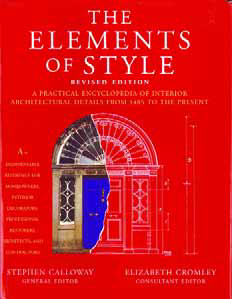ARTICLES
Advance Search
Aquatic Health
Aquatic Health, Fitness & Safety
Around the Internet
Aquatic Culture
Aquatic Technology
Artful Endeavors
Celebrity Corner
Life Aquatic
Must-See Watershapes
People with Cameras
Watershapes in the Headlines
Art/Architectural History
Book & Media Reviews
Commentaries, Interviews & Profiles
Concrete Science
Environment
Fountains
Geotechnical
Join the Dialogue
Landscape, Plants, Hardscape & Decks
Lighter Side
Ripples
Test Your Knowledge
The Aquatic Quiz
Other Waterfeatures (from birdbaths to lakes)
Outdoor Living, Fire Features, Amenities & Lighting
Plants
Ponds, Streams & Waterfalls
Pools & Spas
Professional Watershaping
Structures (Editor's Notes)
Travelogues & History
Water Chemistry
WaterShapes TV
WaterShapes World Blog
Web Links
Around the Internet
Aquatic Culture
Aquatic Technology
Artful Endeavors
Celebrity Corner
Life Aquatic
Must-See Watershapes
People with Cameras
Watershapes in the Headlines
I've always believed that one of the keys to happiness is enjoying what you do for a living and savoring each day in one way or another. Yes, we all want to make good money and have the sense that we've risen to a place of status and respect within our profession and, yes, we all know that meaningful work provides many different types of rewards, but for me, the greatest of these accrue to those who don't simply work to live, but instead live to work. When I get up in the morning and assume my role as a watershape designer, I invariably greet each day and its tasks with joy. And it's not simply that I love this business (which I do); more important, it's that I genuinely, honestly appreciate my
I've always believed that one of the keys to happiness is enjoying what you do for a living and savoring each day in one way or another. Yes, we all want to make good money and have the sense that we've risen to a place of status and respect within our profession and, yes, we all know that meaningful work provides many different types of rewards, but for me, the greatest of these accrue to those who don't simply work to live, but instead live to work. When I get up in the morning and assume my role as a watershape designer, I invariably greet each day and its tasks with joy. And it's not simply that I love this business (which I do); more important, it's that I genuinely, honestly appreciate my
If there's one thing about the world of watershaping that never ceases to amaze me, it's the wide spectrum of skills, styles and project types that define the boundaries of what people engaged in this industry do for their clients. Recognizing that breadth and depth is always encouraging (as I've mentioned before in this space), but in today's marketplace it's becoming
If there's one thing about the world of watershaping that never ceases to amaze me, it's the wide spectrum of skills, styles and project types that define the boundaries of what people engaged in this industry do for their clients. Recognizing that breadth and depth is always encouraging (as I've mentioned before in this space), but in today's marketplace it's becoming
Some projects start out on the right foot and stay that way: the right client, the right ideas, the right combination of skills on the design/construction team and a setting that inspires everyone involved to bring his or her very best to the table. The project profiled here is a case in point and is very specifically an example of teamwork at its finest. The result is a tasteful design executed to near perfection in a project that’s beautiful visually while being extremely functional through the fun and luxury it affords the clients. All in all, it’s one of those rare and wonderful projects in which all the right notes were hit. Located on an island off the Connecticut coast, the property is a second home for fun-loving family that had the resources to create a great venue for outdoor gatherings. The site is indeed spectacular, seven acres in all graced by a beautiful 12-bedroom house and
I first became an admirer of Roberto Burle Marx while I was a student in landscape architecture at the University of Florida: His remarkable work, which combined a special brand of modernism with the lush potential of Brazilian settings, was incredibly powerful and the major formative influence on my own professional career. I'd learned how to draw in school and had acquired the technical skills it took to be a landscape architect, but it was seeing how Burle Marx approached his landscapes and paintings - not to mention the way he lived his life - that gave me the spark I needed to define my own approach. My personal relationship with him began soon after I graduated in 1981. I'd read an article in the Miami Herald about Burle Marx turning 70 and began writing to him in hopes he'd invite me to visit his home in Brazil. A couple of months later, I received a call from my friend Lester Pancoast, a well-known Miami architect. Burle Marx was in town and was staying as his houseguest, Pancoast explained, suggesting that since Burle Marx had a free evening I might want to take him to dinner. My future wife and I spent a nice evening with Burle Marx, who was reserved but very polite and seemed all the while to be sizing us up. After dinner, we went to Pancoast's home, where Burle Marx showed us
The idea that someone can enter a man-made body of water and go surfing is both exciting and a bit mind-boggling. Perhaps that's why, as is the case with many a good idea, there's more than one claimant to the distinction of having built the first-ever wave pool. Most people in the know trace the origins of these vessels to the early 1970s, and I know for certain that we at Whitewater West jumped into the game early on: The company became involved in its first wave pool a year after opening its doors in 1982, and to date we've been involved in installing many of the hundreds of systems that now grace aquatic facilities across North America. As waterparks work to distinguish themselves, wave pools have become more elaborate when it comes to both themes and aesthetics. In fact, in the 17 years I've been working on wave or surf pools for the company, I've seen these vessels grow dramatically both in popularity and in the level of the technologies and design details that make them
The idea that someone can enter a man-made body of water and go surfing is both exciting and a bit mind-boggling. Perhaps that's why, as is the case with many a good idea, there's more than one claimant to the distinction of having built the first-ever wave pool. Most people in the know trace the origins of these vessels to the early 1970s, and I know for certain that we at Whitewater West jumped into the game early on: The company became involved in its first wave pool a year after opening its doors in 1982, and to date we've been involved in installing many of the hundreds of systems that now grace aquatic facilities across North America. As waterparks work to distinguish themselves, wave pools have become more elaborate when it comes to both themes and aesthetics. In fact, in the 17 years I've been working on wave or surf pools for the company, I've seen these vessels grow dramatically both in popularity and in the level of the technologies and design details that make them
When people ask me how I approach the design process, I tell them it's always based on three things: The clients' ideas about what they want; the site's characteristics; and the architecture of the home. If I had to pick one of those factors that's been the most challenging for me to master, I'd have to say it's been gaining a firm grasp on architecture and the details that make up architectural styles. And when I've been asked where that kind of background can be gained in the form of a reference book, I've always been at something of a loss to make a recommendation. Basically, it's tough to narrow things down because architectural design is so huge a topic. Without an architect's educational background and training, I've been left to pick up what I can mostly by paying attention to what I see around me - a challenge in itself in my area, where most



















A Master at Work